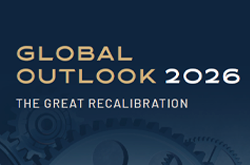Dry January
Monthly House View - February 2022 - Download here
Cheered by the euphoric market, investors took off for the holidays in high spirits, and woke up in 2022 to a new scene playing out in front of their eyes with virtually no time to react. Rates were rising sharply, tech and luxury goods leaders in a correction, and sabres rattling in Eastern Europe and Central Asia. This was enough to persuade them to shift gears and embrace a kind of monetary and financial dry January, breaking with the end-2021 market complacency and when the central banks’ most accommodative members (the “doves”) give in to the proponents of tighter monetary policy (the “hawks”), it’s time to turn the page on 2021 and correct its most visible excesses.
What do these stocks in correction have in common? Valuation levels are still what matter most when trying to make the market take its medicine. With rate hikes becoming more urgent, investors are massively selling securities whose valuation multiples exceed 40-50x earnings, a level dangerously close to their return on equity with longterm rates. The risk is that they are discounting these stocks’ growth outlooks, record profitability and pricing power. These factors make them a good defence against inflation, which has remained high for longer than expected. Conversely, some of the winners of 2021, mainly banking stocks and energy, got off to a great start in 2022.
Is this a movie we have already seen? Some may be tempted to draw a parallel with the beginning of last year, which was also characterised by rate hikes and an equity rotation. But the situation is not exactly the same. Last year, it was the growth acceleration, the Biden plan, the democratic Senate, the vaccine rollout, and, lastly, the first warnings on inflationary risk that led to this set of circumstances.
This year, the environment is one of normalisation for both growth and monetary policies, with the exception of China as regards the latter. Inflation might have already peaked, but rate hikes and the reduction in the Fed’s balance sheet lie ahead. That is the big difference with 2021 in that real interest rates will end up rising. The change since December is that the topic has shifted from rate hikes to balance sheet reduction, from short-term rates to long-term rates, and from currencies to equities. It’s possible that a better comparison would be early 2018, when the Fed accelerated its rate hikes and January began with a sector rotation and ended with a correction.
But let’s maintain some perspective, the US 10-year net of inflation is at -4% to -5% and will remain in negative territory throughout 2022, which should remain favourable for risky assets. However, one risk just as great as ignoring the changes underway would be to overstate these risks and fear a shock similar to the bond crash of 1994; since then, the Fed has conditioned us to change course almost every time the markets start to wobble.
Rather than trying to predict an uncertain future, the most important thing investors can do is adapt to whatever comes next while keeping a watchful eye on signals from the central banks and corporate news. Ultimately, the key to the equity markets’ trajectory will continue to lie in equities’ profitability and growth trajectory. This is the only asset class where it is possible to both withstand erosion in real returns and find sectors that hold promise even in the face of rate hikes. The good news is that volatility should offer some entry points, which were almost nowhere to be found in 2021.
Monthly House View, 21/01/2022 release - Excerpt of the Editorial
January 31, 2022




